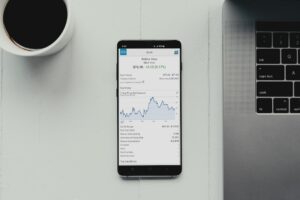Forex Broker Rating: How to Evaluate a Broker’s Trading Platform and Features
When it comes to forex trading, choosing the right broker is crucial for your success in the market. A broker acts as an intermediary between you and the forex market, providing you with access to trade various currency pairs. One of the essential factors to consider when evaluating a broker is their trading platform and features. In this article, we will examine the key aspects to look for in a forex broker’s trading platform and how to evaluate them.
1. User-Friendly Interface:
A trading platform should have a user-friendly interface that is easy to navigate and understand. It should provide clear and concise information about your trades, account balance, and other relevant data. Look for a platform that offers intuitive charts, customizable layouts, and a variety of technical analysis tools. A cluttered and confusing interface can lead to mistakes and missed opportunities, so it’s essential to choose a platform that suits your trading style and preferences.
2. Execution Speed:
In forex trading, every second counts. A delay in executing trades can result in missed opportunities or slippage, which can impact your profitability. When evaluating a broker’s trading platform, consider the execution speed they offer. Look for a broker that can provide fast and reliable execution, ensuring that your orders are executed promptly, even during periods of high market volatility.
3. Order Types and Risk Management Tools:
A robust trading platform should offer a variety of order types and risk management tools to help you manage your trades effectively. Look for features such as stop-loss orders, take-profit orders, trailing stops, and guaranteed stop-loss orders. These tools can help you limit your losses and protect your profits, even when you are not actively monitoring the market. Additionally, a platform that supports advanced order types like OCO (One Cancels the Other) and IF-Done can provide you with more flexibility and control over your trades.
4. Charting and Technical Analysis Tools:
Charts and technical analysis tools are essential for making informed trading decisions. A good trading platform should offer a wide range of charting options, including different timeframes, chart types, and indicators. Look for a platform that provides a comprehensive set of technical analysis tools, such as trend lines, Fibonacci retracements, and moving averages. The ability to customize and save chart templates can also be beneficial for efficient analysis and trading.
5. Mobile Trading:
In today’s fast-paced world, the ability to trade on the go is crucial for many traders. A trading platform that offers mobile compatibility allows you to access the forex market from your smartphone or tablet. Look for a platform that has a dedicated mobile app or a responsive web-based platform. Mobile trading apps should provide the same functionality as the desktop version, including real-time quotes, charts, order placement, and account management.
6. Backtesting and Strategy Development:
For traders who rely on automated trading systems or develop their own trading strategies, a platform that supports backtesting and strategy development is essential. Backtesting allows you to test your trading strategies using historical data to evaluate their performance. Look for a platform that provides a user-friendly interface for strategy development and backtesting, allowing you to optimize and fine-tune your strategies before deploying them in live trading.
7. Customer Support:
Lastly, consider the level of customer support offered by the broker. A reliable and responsive customer support team can be invaluable, especially for new traders. Look for a broker that provides multiple channels of communication, such as phone, email, and live chat. Additionally, check if they offer multilingual support and have knowledgeable representatives who can assist you with any platform-related issues or general inquiries.
In conclusion, evaluating a forex broker’s trading platform and features is crucial before opening an account. A user-friendly interface, fast execution speed, comprehensive order types and risk management tools, advanced charting and technical analysis capabilities, mobile trading, backtesting and strategy development options, and reliable customer support are all key factors to consider. By carefully evaluating these factors, you can choose a broker with a trading platform that aligns with your trading needs and enhances your overall trading experience.






